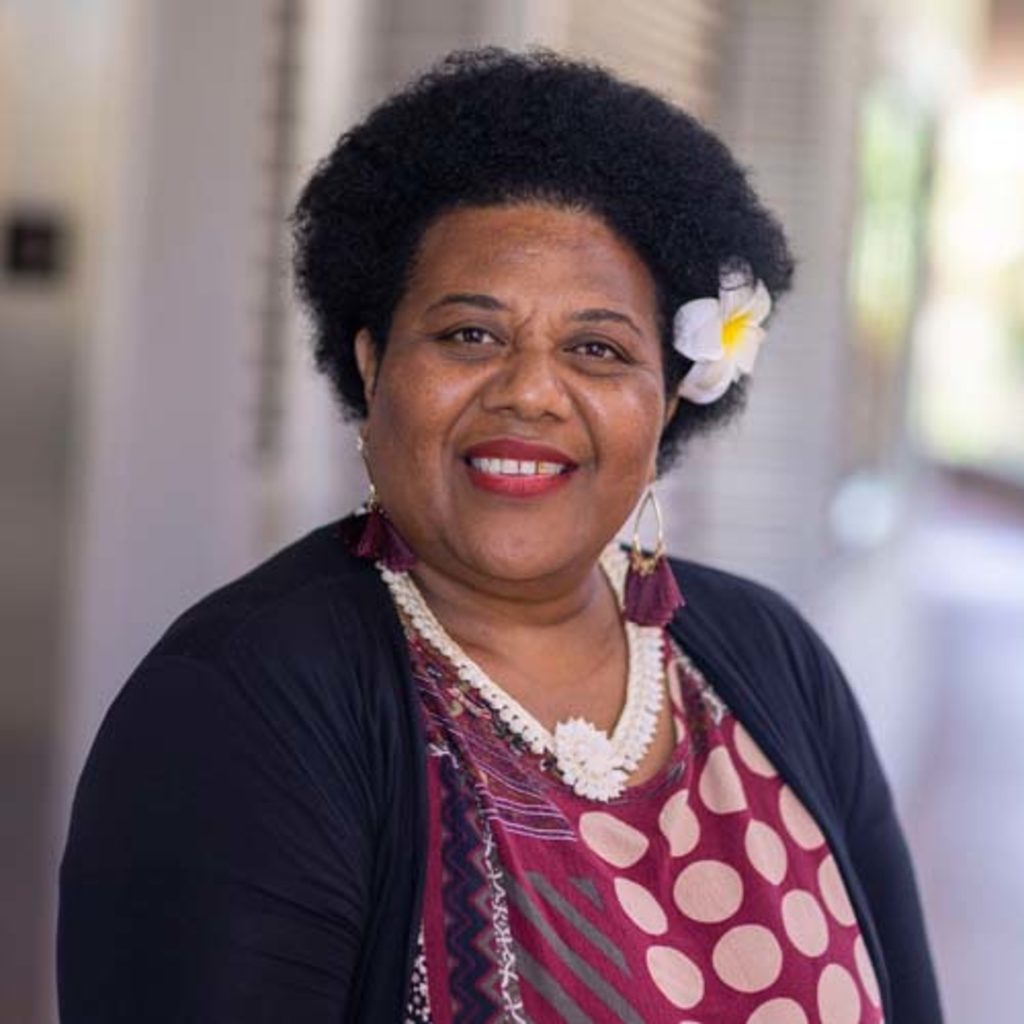As a young girl growing up in Colo-i-Suva, Tarisi Sorovi began to develop a fascination with the natural world around her, as well as a passion for tales of ancient Fiji.
It was an obsession that would result in a colourful career that has taken her across the Pacific and beyond.
Today, Dr Tarisi Sorovi-Vunidilo lives her childhood dream as a fierce advocate and proud defender of indigenous Fijian culture and heritage.
She is the youngest of seven siblings and hails from the village of Natokalau, Yawe on Kadavu and has maternal links to Nukunuku Village in the district of Tavuki.
“My father had managed to secure a piece of land in Colo-i-Suva and that was where much of my formative years were spent. I attended Nabua Primary then Nabua Secondary and moved on to Adi Cakobau School (ACS) in Sawani.”
Dr Tarisi is an archaeologist by profession and began her career at the Fiji Museum after graduating from the University of the South Pacific (USP) with a degree in geography and sociology.
“I deeply loved these two subjects because, while growing up as a child in Colo-i-Suva, chores like weeding, farming, collecting firewood, and catching prawns were integral parts of my life. Geography allowed me to explore my love for the natural environment, while sociology fed my curiosity about historical accounts, myths, and legends,” she shared.
Dr Tarisi married Kalisito Vunidilo, who belongs to the sauturaga or ‘kingmaker’ clan of the paramount chief of Namosi, na Gone Turaga na Vunivalu na Tui Namosi. They have two children, a son, Leo, and a daughter, Merewairita.
After the political upheavals of 2000, Dr Tarisi and her family decided to move across to New Zealand, which they did in 2001.
In 2006, she completed her Postgraduate Diploma in Maori and Pacific Development, then her Masters in anthropology in 2010 before she started her Phd journey in 2012.” I joined the Museum of New Zealand at Te Papa in Wellington,” Dr Tarisi said.
“Later, I moved to the Waikato Museum in Hamilton, and after that, I had a short stint at the Auckland Museum as well as the University of Auckland.
“In 2017, she graduated with her PhD in Pacific Studies from the University of Auckland in New Zealand under the supervision of Prof Steven Ratuva.
Dr Tarisi and her family then moved to Hawaii, where she became an assistant Professor of anthropology at the University of Hawaii at Hilo, before moving to the United States to join California State University, where she now serves as an assistant professor specialising in the fields of archaeology (the study of historical artefacts), anthropology (the study of human societies and culture) and museology (the study of museums).
“A common thread that runs through these three fields of study is that they all have to do with ancient histories of people and societies,” she said.
Reflecting on her time at the Fiji Museum, Dr Tarisi revealed that much of her work as an archaeologist out on the field involved touring the country, visiting ancient village sites and ancestral mounds, and then conducting detailed and extensive mapping and excavation work.
“We would dig up and collect pieces of pottery, and artefacts, as well as collect samples of human skeletons and then determine their age through the process of radiocarbon dating.”
“It was a great joy for me to be engaged in this work because it felt like a dream come true and a realisation of my passion for the ancient world,” she shared.
Dr Tarisi also highlighted that while she worked at the Fiji Museum, she would always facilitate various priceless indigenous artifacts that were usually kept in the museum store, to be brought out for public viewing so that visitors — most especially the children — could gain a deeper appreciation for their culture.
“As an indigenous Fijian, an iTaukei, I always think to myself if our people are aware of the treasure trove of indigenous Fijian pieces of history kept at the museum.”
“These items include pots, mats, masi (decorative bark cloth), war clubs, and ornaments, much of which are in perfect condition, yet it seems only tourists are the ones who take a greater interest in viewing and learning more about our cultural artefacts than we do,” she said.
Dr Tarisi expressed her desire to see more young people in Fiji consider archaeology, anthropology, or museology as a field of study, which according to her, could offer a much more rewarding career pathway, both academically and personally.
“The wonderful thing is that the three fields I mentioned earlier are available in every university in the world today. So, the pathways and opportunities exist. It is just a matter of finding out where your interests and passions lie.”
She also highlighted that the disappearance of many unique indigenous Fijian cultural practices and the overall decline in interest in iTaukei culture, in general, was the result of years of rapid modernisation and neglect.
“While the arrival of the church and the colonial administration brought many positives, the desire to quickly westernise ourselves to fit in, resulted in much of the unique cultural practices that defined us as a people to be dismissed as ‘primitive’ and ‘evil’.”
“So, whenever someone would see a war club, they would quickly dismiss it and label it as tevoro (demonic/of the devil), without trying to understand the story and origin behind it,” she explained.
Dr Tarisi revealed that after visiting several museums and engaging with other cultural experts, she noticed there was now a huge push towards the revival of indigenous cultures around the world.
She runs a social media platform on Facebook — Talanoa with Dr T — along with her husband, Master Kali, through which they engage with hundreds of influential Fijians, touching on issues and topics ranging from culture, tradition, environment, and business.
It is her way of sparking meaningful debate, dialogue, and conversation, as well as an avenue to reinforce her efforts toward promoting and preserving Indigenous Fijian culture and heritage.
Dr Tarisi and master Kali have secured a large portion of land in Namosi at Gasaudrau, where they have built a house and are working towards setting up the first-ever provincial museum in Fiji.
“This will be for the whole of Fiji, but most importantly for the people of Namosi. We intend that when the children of Namosi come to Gasaudrau, they will be able to witness firsthand the unique cultural practices, arts and crafts, as well as biodiversity that is unique to Namosi,” she said.
Dr Tarisi also explained that the museum will be unique in many aspects. It will also serve as a heritage conservatory to house flora and fauna that is endemic to Fiji.
“It will be a place where people, particularly the iTaukei, can come to view plant and animal species to which they share totemic links. Many indigenous Fijians today can only name their totemic plants and animals but have no idea what they look like.
“This heritage museum will be a step in the right direction.”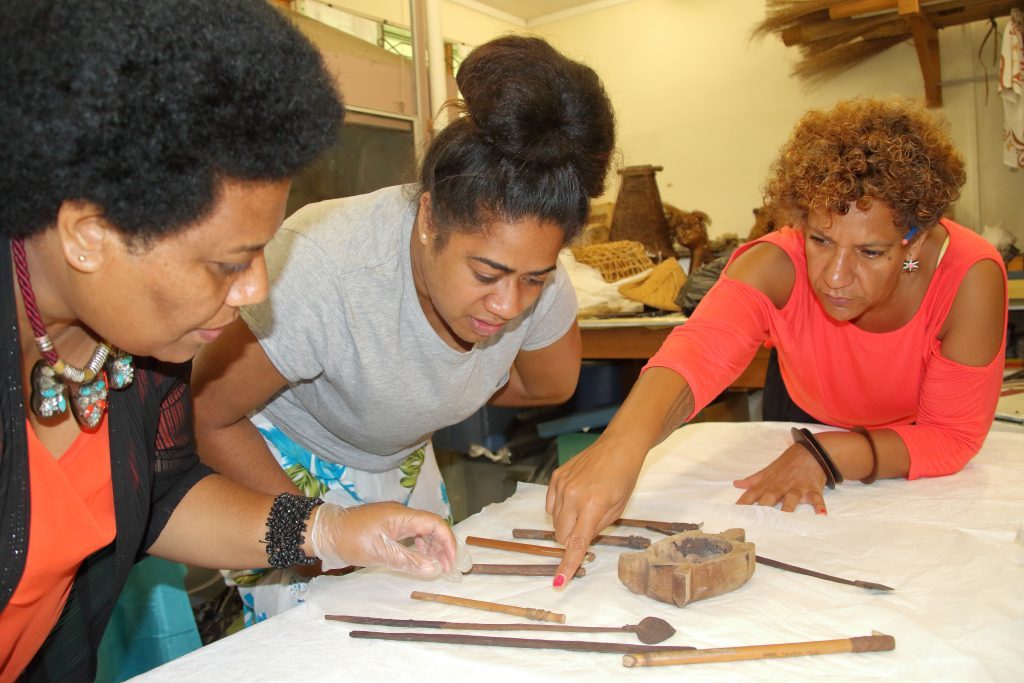
1. (L-R) Dr Tarisi Vunidilo, Mereula Buliruarua, and Donita Hulme looking at iQia (tattooing tools) from the Fiji Museum’s collecition. Picture: THE VEIQIA PROJECT
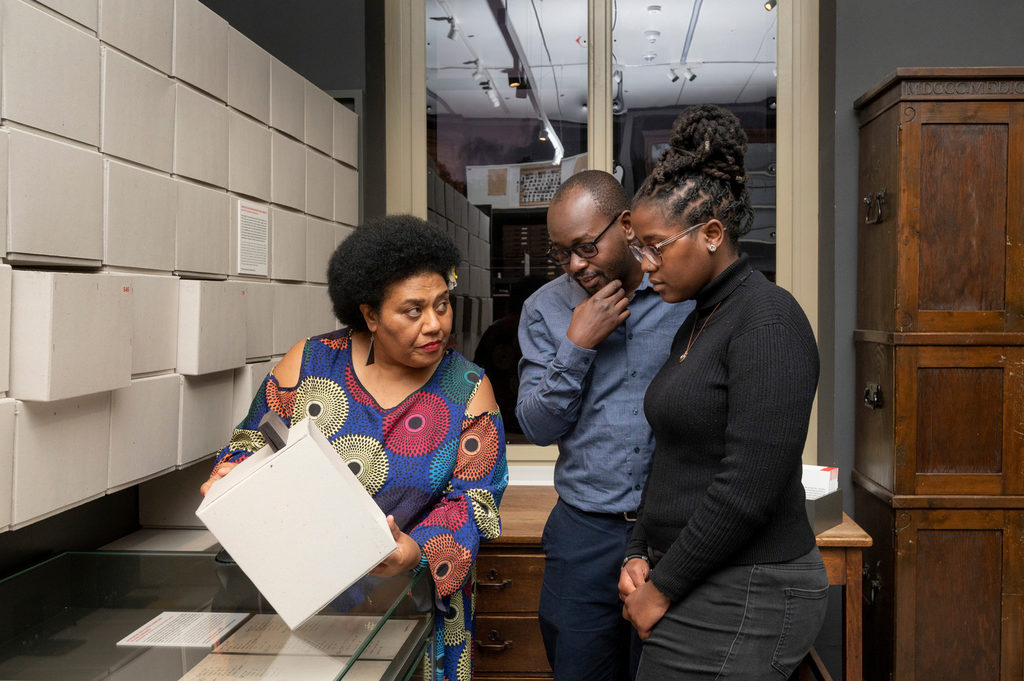
2. Dr Tarisi shows Dr Maximilian Chami of Tanzania’s National Museum and Alma Simba of the University of Dar es Salaam, a skull collection kept at the Historical Anthropology Collection at the University of Göttingen in Germany.
Picture: SUPPLIED
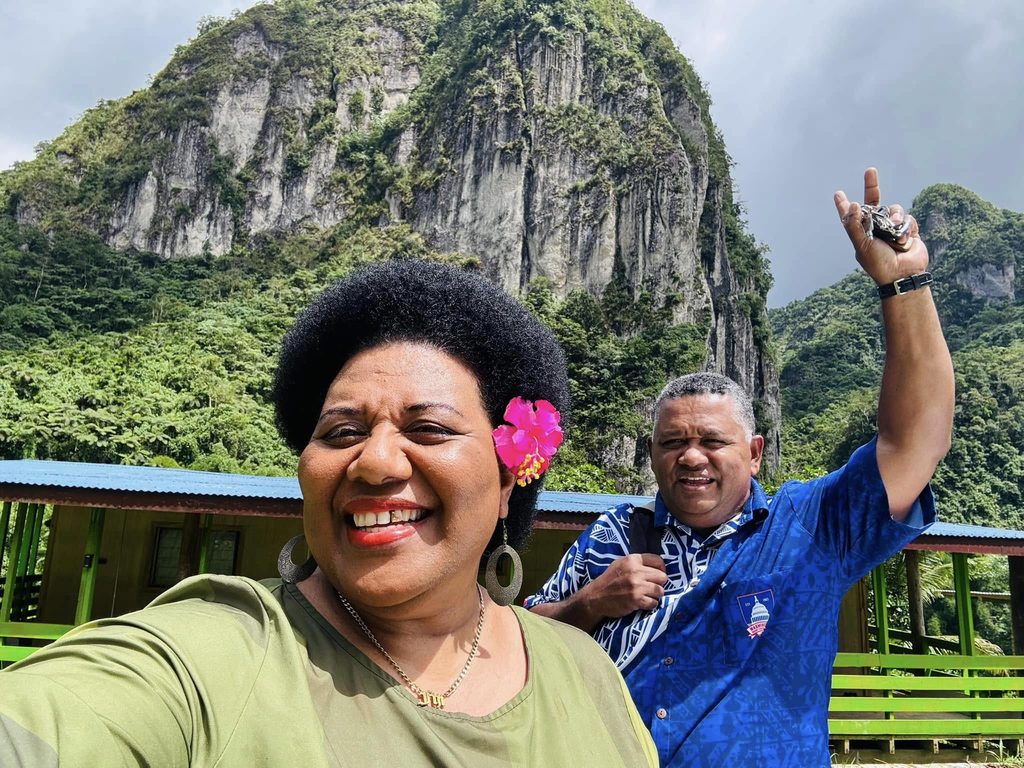
3. Dr Tarisi and Master Kali in front of their home at Gasaudrau, Namosi. Picture: TALANOA WITH DR T
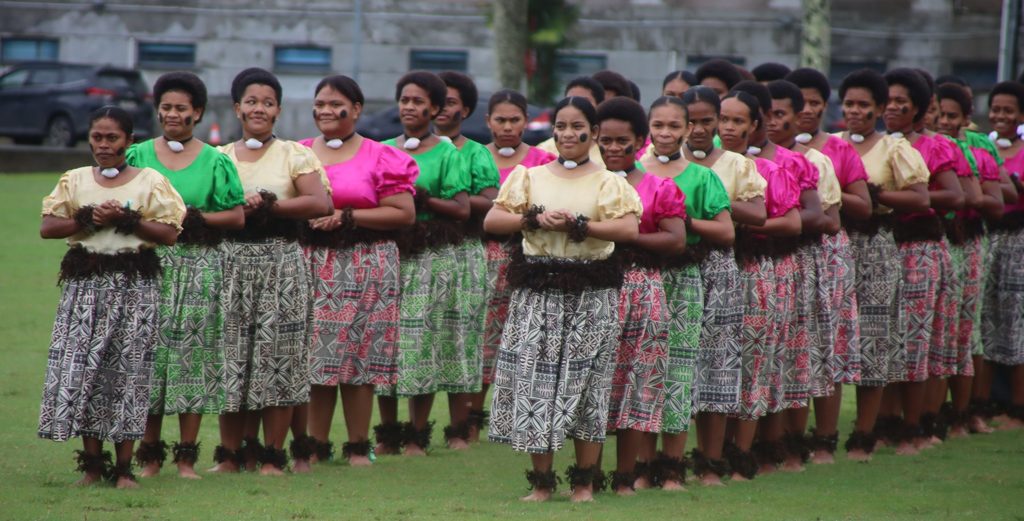
iTaukei girls perform a traditional ‘meke’ during the Ratu Sukuna Day celebrations in Suva last year. Picture: SUPPLIED
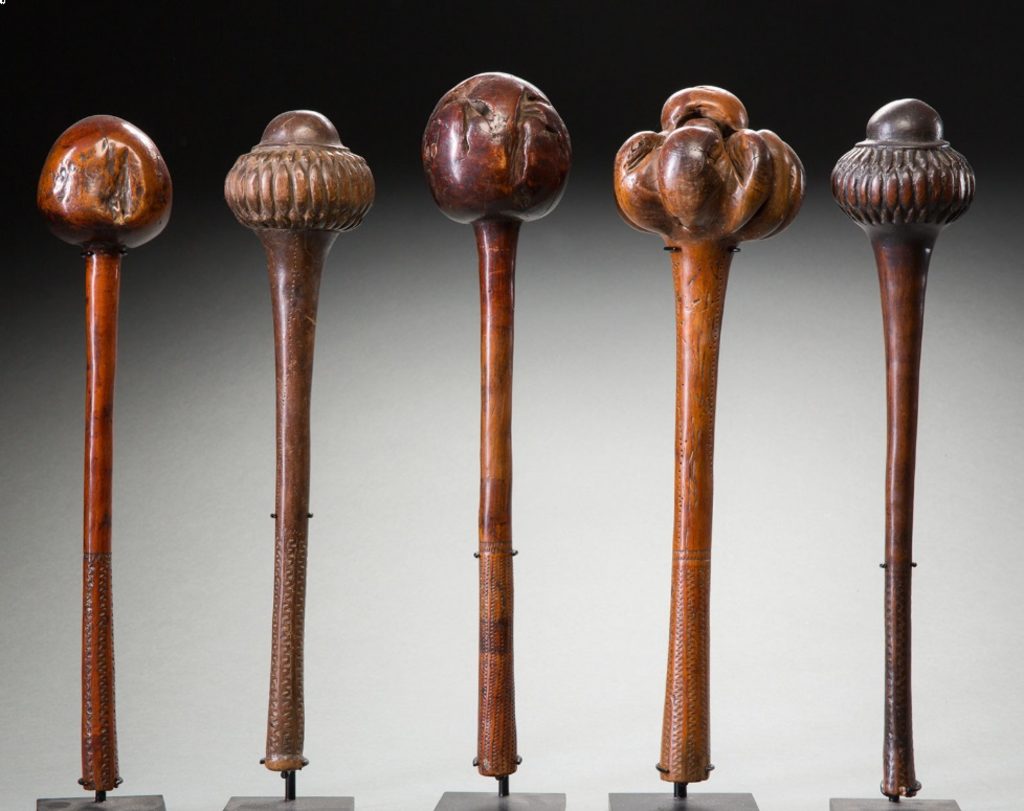
5. Dr Tarisi believes young iTaukei should take a greater interest in viewing and learning more about Fijian cultural artefacts like war clubs, pottery, masi and mats. Picture: www.new-guinea-tribal-arts.com
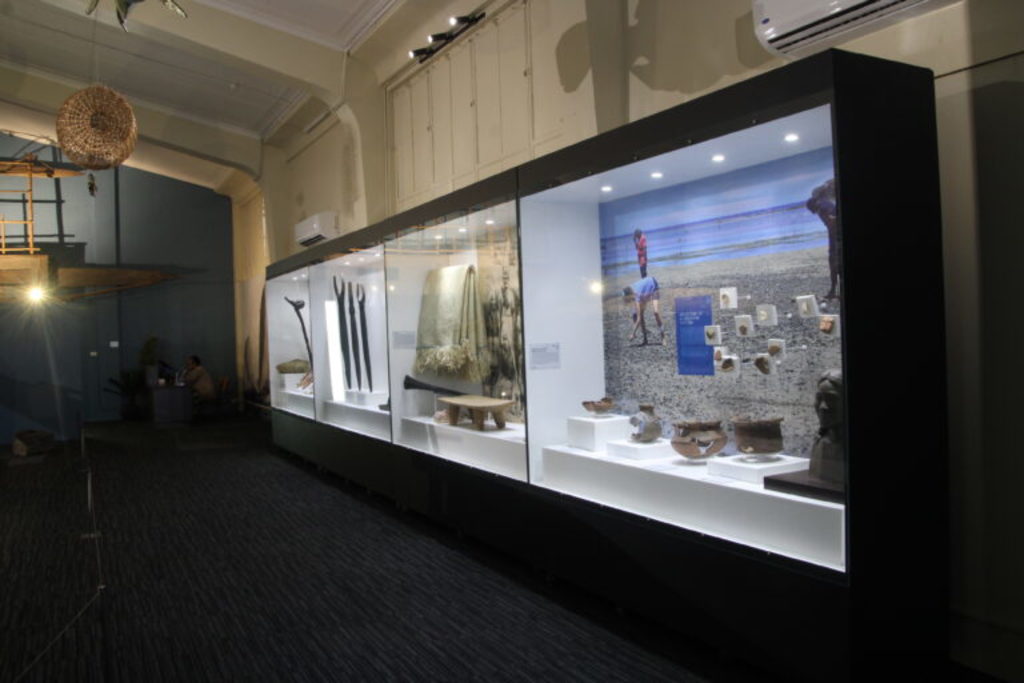
Fijian artifacts on display at the Fiji Museum. In recent years there has been a huge push towards the revival of indigenous cultures around the world. Picture: FIJI MUSEUM

